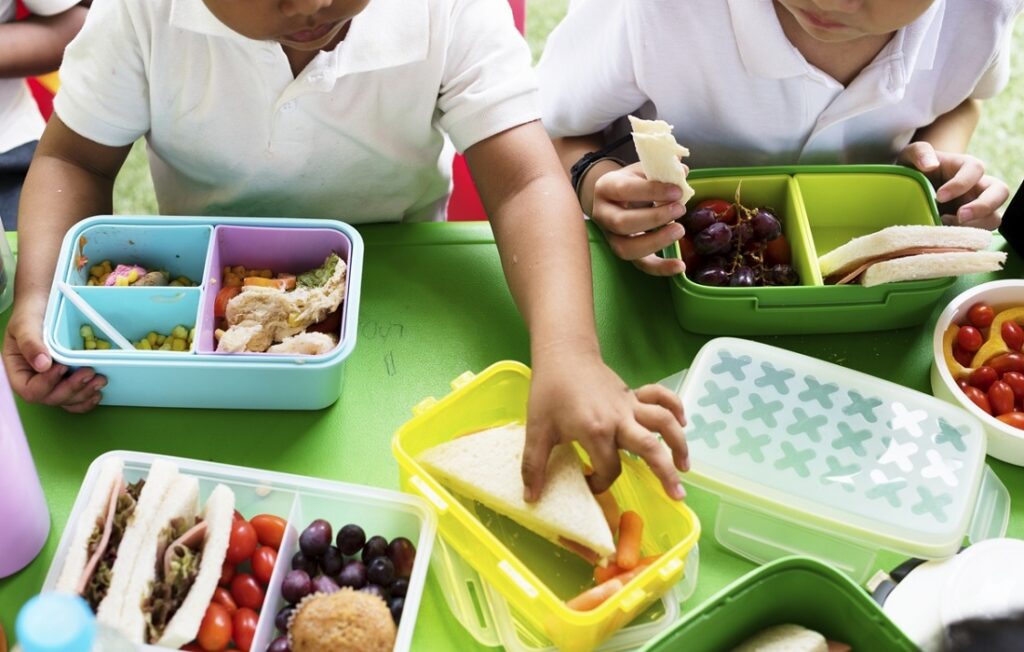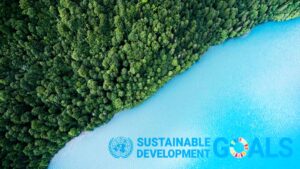While today’s “convenience” culture certainly comes with its benefits—everything is always at the tips of our fingers—it is certainly worth considering the impact and added cost of this convenience; economical, human, and environmental. Take school lunches, for example. It can be difficult to resist kid-sized throwaways, especially when kids are often attracted to the colorful advertising targeted directly to them and beg you to buy them these products. But all of those packages multiplied by hundreds of thousands of students and schools nationwide adds up to A LOT of extra waste.
How much waste does the average student carrying a packed lunch produce each school year? Approximately 67 pounds of waste. That adds up to more than 18,000 pounds of waste produced by the average-sized elementary school in one year. The World Wildlife Fund estimates food waste alone in U.S. schools to reach 530,000 tons annually.
When food and lunch products go to waste, we’re not only creating physical waste that ends up in our landfills, but we’re also wasting all the natural resources that were needed to create or grow that product/food. From the water, soil, and nutrients needed to grow an apple to the water, electricity, and toxic chemicals used to make a plastic lunch bag.
We have to do better. But how?
Tips to Help You Get Started
Buy a long-lasting lunch carrier. Aim for products made with eco-friendly materials and added insulation for keeping food chilled in hot weather and warm in the cold.
Invest in BPA and PCV-free reusable containers. Everything from a drink bottle to sandwich “bags” you can use again and again, the up-front investment will more than pay for itself. And the more you’re able to eliminate plastic, the better. Today, there are some amazing glass, stainless steel, bamboo, cloth, and wax options to choose from.
Opt for durable, washable cloth napkins and real silverware. While, sure, kids might lose a fork every now and again, in the long run, this is a much better option than throwing away all that paper and plastic. Plus, with so many fun napkin designs now available, kids won’t want to lose them.
Choose food that your child is less likely to waste. Okay, sure, easier said than done, right? Especially if your kids often find it difficult to make up their minds about what they want. Try providing a variety of foods in smaller portions and explore more types of food at home before sending it for lunch. You can even take your kids with you to a local farmers market to find healthy items they enjoy eating and that require no added packaging. For a great farmers market resource, check out American Farmland Trust or Local Harvest’s market databases.
Purchase food items in bulk whenever possible. This is not only a great way to reduce packaging waste, but it can also add up to significant savings on your grocery bill, especially for big families.
Why It Matters
Why does 530,000 tons of lunch waste annually pose such a threat? The truth is American landfills are filling up. Quickly. Because they’re reaching capacity, new landfills are required to be built, and these are cropping up even farther away from urban settings, leading to higher disposal fees, more wear and tear on local roads, and increased greenhouse gas emissions from garbage trucks.
More trash incinerators also mean more air pollution. Creating less trash cuts down on the carbon and methane emissions created in the process of burning trash. These emissions can be incredibly toxic; significantly harmful to both human and environmental life.
And then there’s the fact that it takes plastic up to 1,000 years to fully degrade. And, even then, microparticles are still being left behind, contaminating soil and water. It’s estimated that 10% of the plastic produced worldwide every year ends up in our oceans.
At the end of the day, money and resources can be spared with less waste. Money set aside for disposal costs at schools could be used instead for educational programs, books, school activities, and more. Plus, waste-free packed lunches save an average of nearly $250 per person per year—that can add up to some serious family savings!
Just as importantly, packing a healthy, waste-free lunch is a great opportunity to teach kids good green habits and smart nutrition. Parents and teachers can help raise awareness by suggesting field trips to recycling and disposal facilities, and by encouraging your kids’ school to start their own waste-free lunch program! For more information, check out these handy resources from the USDA.



